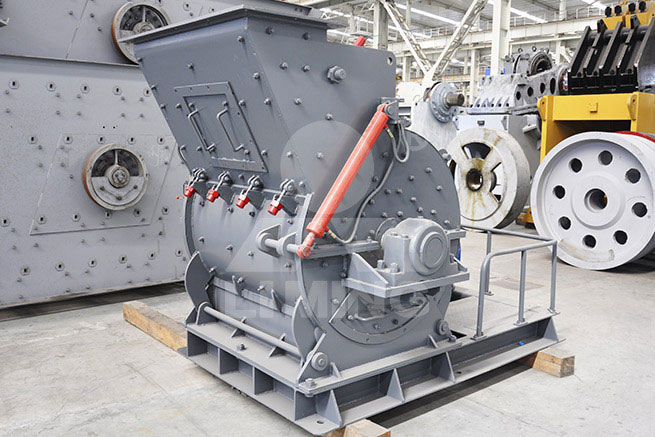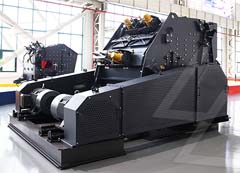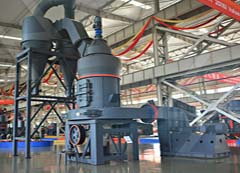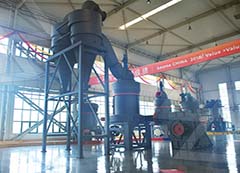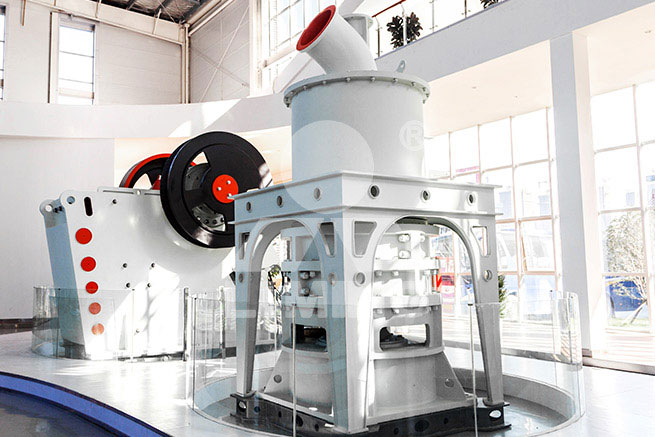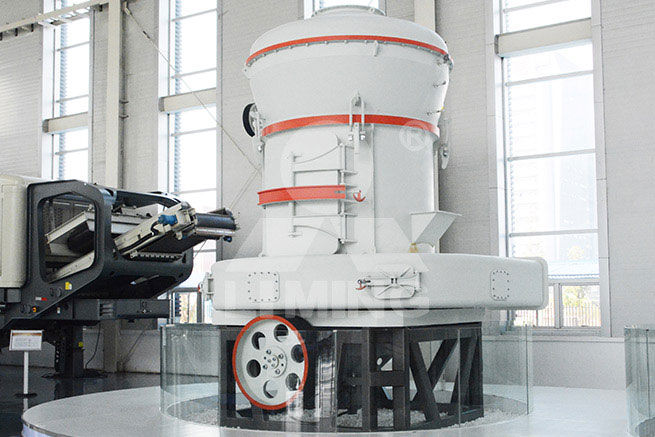design calculations of dense phase system

Dilute or Dense Phase Pneumatic Conveying? AIChE
网页Dense phase. This occurs when particles are conveyed in the gas stream at a velocity that is less than the saltation velocity. Two modes of flow can result in dense phase, namely piston/plug flow and moving bed flow.
More
How to Size a Dense Phase Pneumatic Conveying System
网页The test results indicated a conveying rate of 370 lb/min and an air usage of 150 SCFM.
More
Dense phase pneumatic conveying systems calculation /
网页Design calculation methods for dense phase conveying, which comes back to
More
Dense Phase Systems Explained Macawber Engineering,
网页2020年4月23日 Dense phase is characterized by high positive pressure conveying at
More
Four Basic Details to Consider with Dense Phase
网页There are several system design elements to be considered, the first of which pertains to the physical characteristics of the product being handled. Bulk density, abrasiveness, friability, particle size/distribution/shape,
More
Answers to Eight Common Questions about
网页To design a dilute phase pneumatic conveying system with the air volume to convey your material, you must use mass calculations (that is, pounds of material per pound of air) while considering your installation location’s
More
Pneumatic Conveying Systems Handbook - A guide to Dilute / Dense phase
网页Design methods for dense phase conveying Air conveyor design : Calculation methods to size a dense phase bulk solids pneumatic transport line Solids load ratio Calculation of solids load ratio and reference values for dilute phase and dense phase conveying Pipe blockages, line choking Root causes of powder blockage and how to avoid it
More
Dense-phase conveying Processing Magazine
网页2017年3月29日 By definition, dense phase systems convey material below or significantly below the product saltation velocity.¹ This low-velocity conveying creates a higher product-to-gas ratio — a smaller amount of
More
Dense-Phase Pneumatic Conveying Systems
网页Dense-Phase Pneumatic Conveying Systems. Pneumatic conveying is achieved by creating a pressure differential along a pipeline and using the air that moves toward the area of lower pressure to move bulk material.
More
Ash Conveying Systems - Dense-Phase Pneumatic Conveying
网页requires 46 tons/hour design rate over 350 metres from ESP units and handling high temperature ash at 350C from the economiser. 3 2 ... The typical old style dense-phase systems comprise large vessels with complex pipline arrangements involving tee connections and discharge valves. The Macawber Ashveyor® system is compact, easy to
More
Understanding Dense Phase Conveying • BulkInside
网页2019年9月6日 Dense phase pneumatic conveying is a process for moving material and is used across a variety of light and heavy industries. It transports materials through enclosed pipelines, from one silo to the
More
PRESSURE DROP PREDICTION IN DENSE PHASE PNEUMATIC
网页observations of a dense phase pneumatic conveying system. As an initial step, a standard 90º horizontal to horizontal bend has been studied and the experiments were carried out using three different bulk materials with dense phase flow conditions. The software program named Fluent® has been chosen to carry out calculations in this particular ...
More
Quick Check Method For The Design Of Pneumatic
网页larly if it were a low velocity dense phase system. Since pneumatic conveying systems tend to have high power ratings, particularly for conveying in dilute phase suspension flow, it is useful to be able to obtain a rough esti-mate of air requirements at the feasibility stage of a project. Most of the operating cost of a pneumatic conveying system
More
Dense Phase Flow - an overview ScienceDirect Topics
网页In dense phase flows, there is a pressure recovery, such that the pressure gradient has a negative value. For dilute phase flows, however, there is a pressure loss. The transition between the two occurs at a solids loading ratio of about 35 and at this value, materials can be conveyed vertically down with no pressure drop at all.
More
Theory and Design of Dilute Phase Pneumatic Conveying
网页1. Basis for the Calculation Method The calculations for the design of a dilute phase conveying sys-tem are based on determining the pressure drop that is gener-ated in the system due to the flow of gas and solids. ZENZ and OTHMER state that this pressure drop, for both dilute and dense phase conveying, is composed of six effective forces:
More
Episode 35 : Design Approach to Dilute Phase Pneumatic Conveying
网页2016年4月11日 29. 29 Top Ten Tips for Dense Phase Pneumatic Conveying 1. The term “dense phase” is often misused in practice. For example, many so-called “dense-phase” systems are found to be operating in dilute- phase (or suspension flow).Also, many researchers and designers define “dense-phase” as a flow mode with solidsloading
More
Design of Pneumatic Conveying System - IJIRST
网页Selection of Air mover system, drive system, material feeding system and air drying system. All of the above criteria is designed and selected by using the standard design calculations from the ‘Pneumatic conveying system design guide’ by David Mills. Thus for design calculations mainly two aspects about pneumatic conveying are used and
More
WHAT IS A DENSE PHASE PNEUMATIC CONVEYING
网页Smoot’s Dense Phase Pneumatic Conveying System is a high-pressure, low-velocity system that moves abrasive or easily degradable dry materials down the line gently and efficiently. When part of a long-distance line, a
More
Dense Phase Flow - an overview ScienceDirect Topics
网页In dense phase flows, there is a pressure recovery, such that the pressure gradient has a negative value. For dilute phase flows, however, there is a pressure loss. The transition between the two occurs at a solids loading ratio of about 35 and at this value, materials can be conveyed vertically down with no pressure drop at all.
More
Dense Phase Systems Explained Macawber Engineering, Inc.
网页Continuous Dense Phase. High Pressure – Low Velocity. Material is conveyed below the saltation velocity in a moving bed flow pattern (rolling or plowing). Velocities are 10-25 ft/sec at the feed end, and 40-70 ft/sec at the terminal end. Continuous dense phase is used to handling powders that may be easily fluidized and are able to retain air.
More
Dense-Phase Pneumatic Conveying Systems
网页The transfer rate, Q in kg/sec, can be expressed as Q = bAv. where b = the conveying density in kg/m³, A = the conveying pipe area in m², and v = the conveying velocity in m/sec. Rearranged, the formula reads: Therefore, if
More
Ash Conveying Systems - Dense-Phase Pneumatic Conveying
网页requires 46 tons/hour design rate over 350 metres from ESP units and handling high temperature ash at 350C from the economiser. 3 2 ... The typical old style dense-phase systems comprise large vessels with complex pipline arrangements involving tee connections and discharge valves. The Macawber Ashveyor® system is compact, easy to
More
How to Size a Dense Phase PNEUMATIC CONVEYING
网页Manually sizing a dense . phase pneumatic conveying . system is often considered a “black art” — a type of tribal knowledge learned and passed down over time by a handful of manufacturers. In this article, we will demonstrate how to size a standard dense phase transporter system. The key system sizing steps are outlined below using alumina
More
Transportation of CO2 in Dense Phase Campbell Tip of the
网页2012年1月1日 Dense phase is a highly compressible fluid that demonstrates properties of both liquid and gas. The dense phase has a viscosity similar to that of a gas, but a density closer to that of a liquid. This is a favorable condition for transporting CO 2 and natural gas in dense phase.
More
PRESSURE DROP PREDICTION IN DENSE PHASE PNEUMATIC
网页observations of a dense phase pneumatic conveying system. As an initial step, a standard 90º horizontal to horizontal bend has been studied and the experiments were carried out using three different bulk materials with dense phase flow conditions. The software program named Fluent® has been chosen to carry out calculations in this particular ...
More
Dense Phase pneumatic conveying systems overview
网页Dense phase conveying systems are a type of the pneumatic conveying system, which is using air to transport bulk solids / powder in pipes. Dense phase conveying differs from the other main technology of pneumatic
More
Episode 35 : Design Approach to Dilute Phase Pneumatic Conveying
网页2016年4月11日 29. 29 Top Ten Tips for Dense Phase Pneumatic Conveying 1. The term “dense phase” is often misused in practice. For example, many so-called “dense-phase” systems are found to be operating in dilute- phase (or suspension flow).Also, many researchers and designers define “dense-phase” as a flow mode with solidsloading
More
Dense Phase Pneumatic Conveying System Design Nol-Tec
网页Dense phase pneumatic conveying is a method for moving difficult, abrasive, mixed batch, or friable materials at a low product velocity. Gentler Way To Convey Our system incorporates low gas volume at high pressure, conveying materials through an enclosed pipe in slug form at a controlled product velocity.
More
WHAT IS A DENSE PHASE PNEUMATIC CONVEYING
网页Smoot’s Dense Phase Pneumatic Conveying System is a high-pressure, low-velocity system that moves abrasive or easily degradable dry materials down the line gently and efficiently. When part of a long-distance line, a
More
Dilute Phase Pneumatic Conveying - IAC
网页Typical factors used for calculating pneumatic conveying systems are: Fa – Acceleration Factor Fd – Total distance in system Fe – Total degrees of bends or elbows in system Fv – Total distance of vertical pipe in system Safety Factors are placed on final calculated values of up to 30% to insure that the convey line does not plug.
More
Calculation of Pressure Losses During Pneumatic Transport
网页2020年5月26日 The calculation of pressure losses in pneumatic transport is the primary target not only while designing pneumatic transport systems, but also while choosing the most favorable operating mode, which allows reducing the consumption of compressed air. A large number of theoretical and experimental works is devoted to determination of
More
Open Access proceedings Journal of Physics: Conference series
网页the dense phase region, CO 2 density increases with decreasing temperature[14]. The most efficient way in terms of cost and throughput of transporting CO 2 by pipeline is in its supercritical or dense phase. 3. CO 2 pipeline transportation process The CO 2 pipeline system is similar to the natural gas or products pipeline system, including of ...
More- << Previous:Concretecrushing Equipment For Sale And Rental
- >> Next:Jobs Kerja Pt Trubaindo Gypsum Mining


